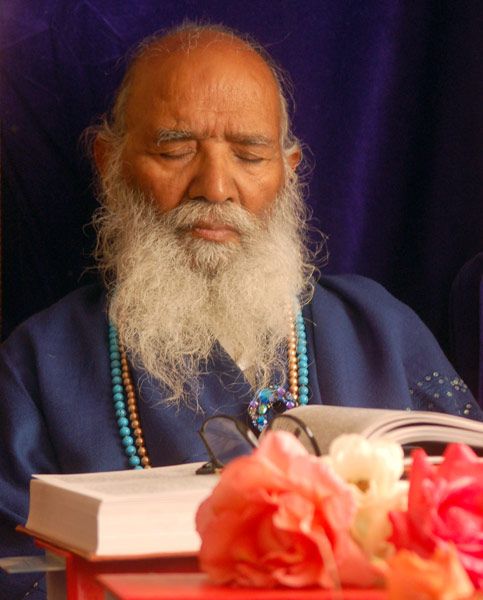What You Are Doing in Meditation

[Swamiji asks us to close our eyes and meditate.]
I do not have to say what you are doing in meditation. Closing the eyes belongs to everyone who sleeps. The birds who sit quiet, animals, dogs and cats, they too all close their eyes. It is very natural for them; whenever they like, they close their eyes.
To open the eyes or to close the eyes has nothing to do with meditation. As with sleep, everybody sleeps, but that is not meditation. It is only if you close the eyes in the waking state that mediation begins. Because, then, waking state is going to be terminated, at least for some time.
But what arises should be known by everyone who deliberately closes his eyes. The first thing for you to know is that forms are not being seen—which you already know, since any time you have, out of necessity, closed the eyes, forms are not there. But now with closed eyes you know forms are not there because you have planned it.
Forms have not gone anywhere by themselves. It is you—who is one of the forms, a person—who have used your own willpower to get away from the presence of the forms, for a few minutes.
Whenever the eyes see the forms, they get into a state of delusion—a state of forgetfulness of their power. Just by seeing the forms of your mother, father, brother or sister, or your garden, house, walls or paintings, you unfold a power of understanding that makes you either feel good about knowing the forms or makes you not to like them. Mostly, whatever eyes see they like. It is only with dangerous things—if you conclude there is a danger or unlikeability—that you don’t like them.
Here, it is a deliberate examination of your own understanding of what happens when you close the eyes. [Swamiji pauses.] You are watching the Space only. Not with your closed eyes, but with some I, some understanding, that concludes, “I am watching.”
This I that is watching has the eyes that know this Space. And this Space is not the same type of space as you were watching when your eyes were open. Therefore, you cannot compare this Space with the space that was being watched with your eyes. This Space is totally different from the space that is watched with open eyes.
And what’s the difference? That your I knows. Your I is the Knower at this time. It has no objects and no subject and is ready to know the Space. That Knowingness, in which subject and object are not there, that is called Pure Knowing Space. That I, which is hidden from your eyes because your body is your “I,” is not the body “I,” or what you call “I am the body.” That I is Pure I, because this body is born and that I is never born. If you think, “I am born,” then your attention is on the body.
Now, at this time, this Space is not born. It has always been. Only the eyes were not able to know it. So, when your eyes are closed, this Knowingness—which is I and Knowingness—and this Space became one and the same.
When you try to unfold freedom later on—by your works, by your talents, by your thinking, by your understanding—it will never come because eyes are open and [they will see] space, or ether, whereas, that is your Self, the Knowingness. It is Pure, Free, Forever, because in it birth does not exist and, thus, death does not exist; and the changes of increase and decrease also do not exist. And that is Pure Love, Knowledge, Unity and sense of Oneness. And that is what you are.
When I lead your attention with open eyes, I want to tell you about this, but you conclude that Pure, Free, Forever is the aakaash, which is the blue sky. But it is known to me that it is the true nature, or swaroop, or source of all manifest beings.
Amaram Hum, Madhuram Hum, Amaram Hum, Madhuram Hum. I use these words because these words do not belong to any form. The meaning of these words is only This. I’ll be quiet.
Copyright © 1999-2008 International
Meditation Institute. All Rights Reserved